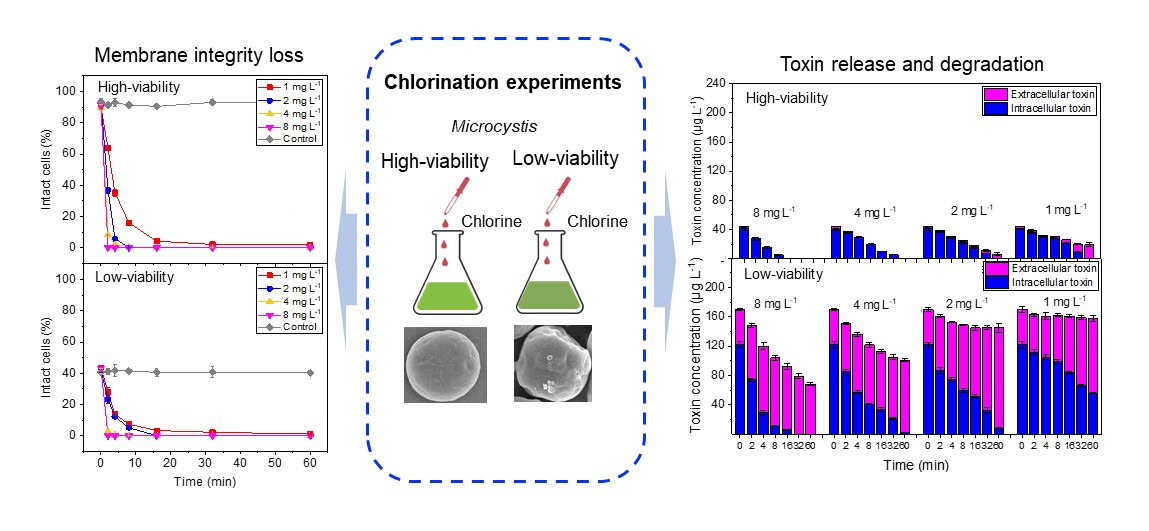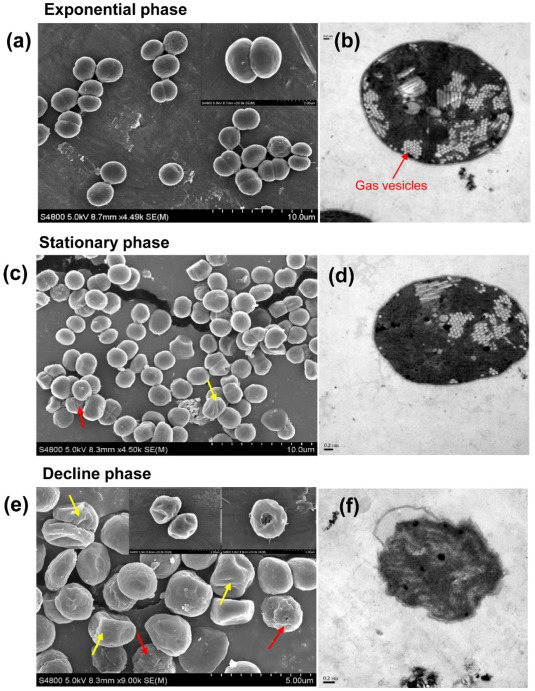Lakes and reservoirs are important sources of drinking water, but high frequency of toxic cyanobacteria bloom and associated cyanotoxin could impair drinking water quality. In recent years, majority studies have investigated the effects of chlorination on membrane integrity and toxin fate of high-viability cyanobacteria. Actually, cyanobacteria bloom is a successive process in natural freshwaters (e.g., Taihu lake), including development, maintenance and decline stage (Tang et al., 2018). Tang et al. (2018) found gene expression of nitrogen and phosphorus metabolism were down-regulated at decay stage, suggesting that nutrition limit may cause a decrease of cell-viability. However, whether the change of cell-viability will affect chlorination was unclear.
To investigate this issue, a typical toxic cyanobacteria (Microcystis aeruginosa FACHB - 915) was used as experimental material. High- and low-viability cells were collected to conduct chlorination experiments. Results showed chlorine exposure was lower for low-viability cells than high-viability cells with the same initial chlorine dosage, but low-viability cells were less resistant to chlorination, leading to higher rate of membrane damage and intracellular toxin release. For high-viability cells, there was no increase of extracellular toxin with sufficient chlorine exposure whereas it showed a continuous increase for low-viability cells mainly due to its lower rate of extracellular toxin degradation than intracellular toxin release. Besides, total toxin could be completely oxidized for high-viability cells with sufficient chlorine exposure (>30 mg min L-1) whereas chlorination could not work well for low-viability cells even with chlorine exposure of as high as 36 mg min L-1.
This study was the first report to demonstrate chlorination may not be a feasible option to treat low-viability cyanobacteria during decline stage of cyanobacterial blooms, providing an important reference for the application of chlorination in DWTPs.
These results have recently published in Water research. LI Xi is the first author, and YU Xin is the corresponding author. This study was funded by National Key R&D Program of China (2017YFE0107300) and Science and Technology Major Project of Xiamen (3502Z20171003).

Effects of chlorination on membrane integrity and toxin release/degradation of high- and low-viability cyanobacteria

Morphology characteristics of Microcystis at exponential (15 d), stationary (50 d) and decline phase (90 d) observed by SEM and TEM. SEM images of cell surface at exponential(a), stationary (c) and phase (e). TEM images of cell ultrathin slices at exponential (b), stationary (d) and decline phase (f).